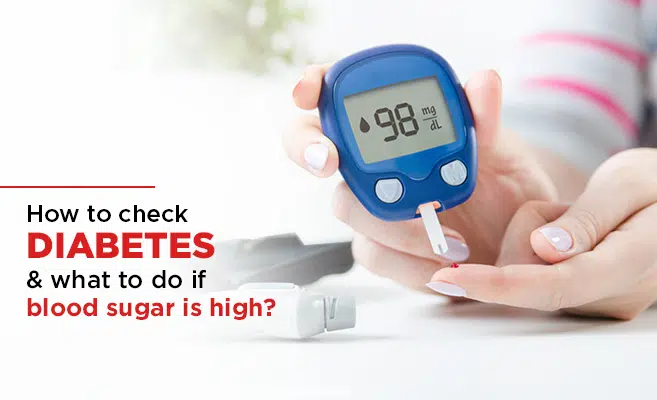Types of Diabetes and What to do if Blood Sugar is High?

Diabetes is when the body does not produce enough insulin or cannot use insulin properly (insulin resistance). The pancreas produces insulin to help glucose get into the body’s cells. In diabetes, the pancreas does not produce enough insulin, or the cells do not react to it.
What Are the Different Types of Diabetes and how to manage it?
Diabetes is a chronic disease that affects your body’s ability to produce or respond to insulin. The common types of diabetes mellitus are: Type 1, Type 2, and Gestational diabetes.
– Type 1 is an autoimmune condition that destroys the cells in the pancreas that produce insulin.
– Type 2 is caused by insulin resistance, which means the body does not use insulin effectively.
– Gestational diabetes happens when pregnant women who have never had diabetes before develop high blood sugar levels during pregnancy.
The symptoms of diabetes can be different for each person and depend on how well controlled their blood sugar levels are. The symptoms include frequent urination, increased thirst, weight loss without trying, blurry vision, fatigue or drowsiness, slow healing wounds or cuts and sores that don’t heal as quickly.
Type 1 Diabetes Treatment Options
Type 1 Diabetes is an autoimmune disease in which the body’s immune system attacks and destroys the insulin-producing cells in the pancreas.
Type 1 diabetes is treated with insulin. Diet and exercise can help manage blood sugar levels. Insulin is needed to control blood sugar levels and to prevent symptoms of type 1 diabetes from getting worse. The goal of treatment is to keep blood sugar levels near normal as much as possible while avoiding low blood sugar (hypoglycemia). Insulin injections are frequently needed throughout the day to control blood sugar levels and are the most effective treatment for type 1 diabetes. There are also devices to help monitor blood glucose levels, such as continuous glucose monitors or insulin delivery devices such as insulin pumps.
Type 2 Diabetes Treatment Options
Type 2 Diabetes is a chronic condition that affects how your body metabolizes sugar. It occurs when the body becomes resistant to insulin and ultimately results in pancreas not being able to produce enough insulin.
Type 2 diabetes can be treated with lifestyle changes such as diet and exercise, physical activity, oral medications, and injectable medications. Bariatric surgery is also extremely helpful in morbidly obese diabetic patients. There are different diabetes medications available to those who suffer from the disease. The medication prescribed will depend on the severity of the symptoms and how well the person responds to treatment.
How to check diabetes?
A blood glucose Level Test is important to know if you have diabetes.
There are two ways to check your blood sugar level:
Blood test: This will check the glucose levels in your bloodstream (Blood glucose fasting and postprandial) and glycated hemoglobin (estimates average blood glucose in past 3 months).
Urine test: You can test for diabetes by using a urine test strip also. You have to pee on a strip and wait for the results. These are used much less now with the routine availability of blood glucose tests.
What are the complications if diabetes is not well controlled?
Diabetes is a chronic condition where the body cannot properly regulate blood sugar levels. If uncontrolled for a long period it can lead to long-term complications such as atherosclerotic cardiovascular diseases, blindness, peripheral neuropathy and lower limb amputation. It is also the leading cause of chronic liver and kidney failure. Hence, achieving good control of diabetes and maintaining it is essential to prevent long term complications, morbidity and mortality associated with this disease.

 Book An Appointment
Book An Appointment Virtual Consultation
Virtual Consultation




